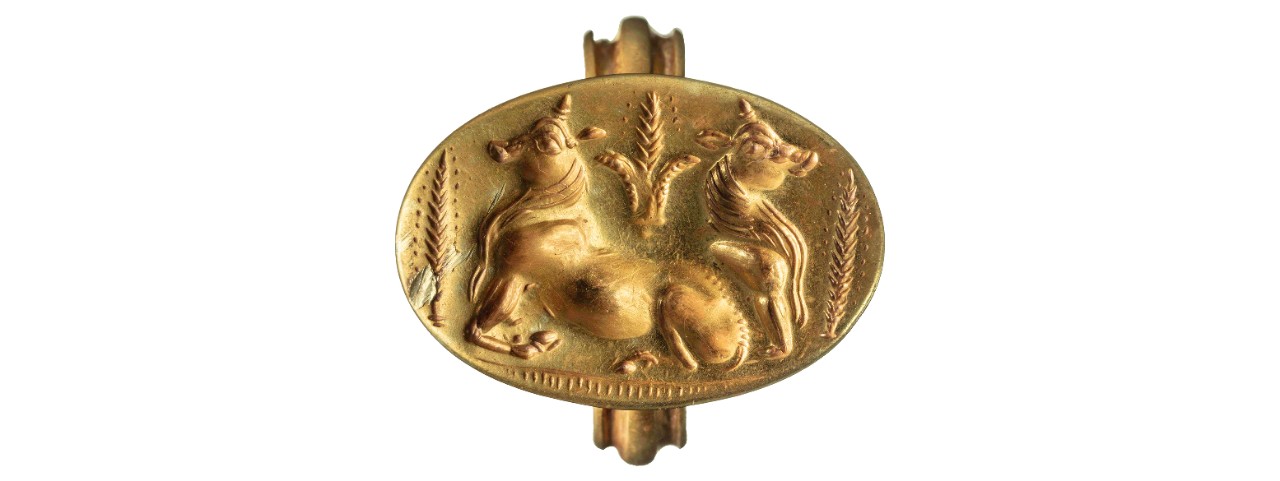
UC discovers princely tombs near 'Griffin Warrior'
Startling find adds to amazing story of powerful Greek figure
Archaeologists with the University of Cincinnati have discovered two Bronze Age tombs containing a trove of engraved jewelry and artifacts that promise to unlock secrets about life in ancient Greece.
The UC archaeologists announced the discovery Tuesday in Greece.
Jack Davis and Sharon Stocker, archaeologists in UC's classics department, found the two beehive-shaped tombs in Pylos, Greece, last year while investigating the area around the grave of an individual they have called the “Griffin Warrior,” a Greek man whose final resting place they discovered nearby in 2015.
Like the Griffin Warrior’s tomb, the princely tombs overlooking the Mediterranean Sea also contained a wealth of cultural artifacts and delicate jewelry that could help historians fill in gaps in our knowledge of early Greek civilization.
UC’s team spent more than 18 months excavating and documenting the find. The tombs were littered with flakes of gold leaf that once papered the walls.
“Like with the Griffin Warrior grave, by the end of the first week we knew we had something that was really important,” said Stocker, who supervised the excavation.
“It soon became clear to us that lightning had struck again,” said Davis, head of UC’s classics department.
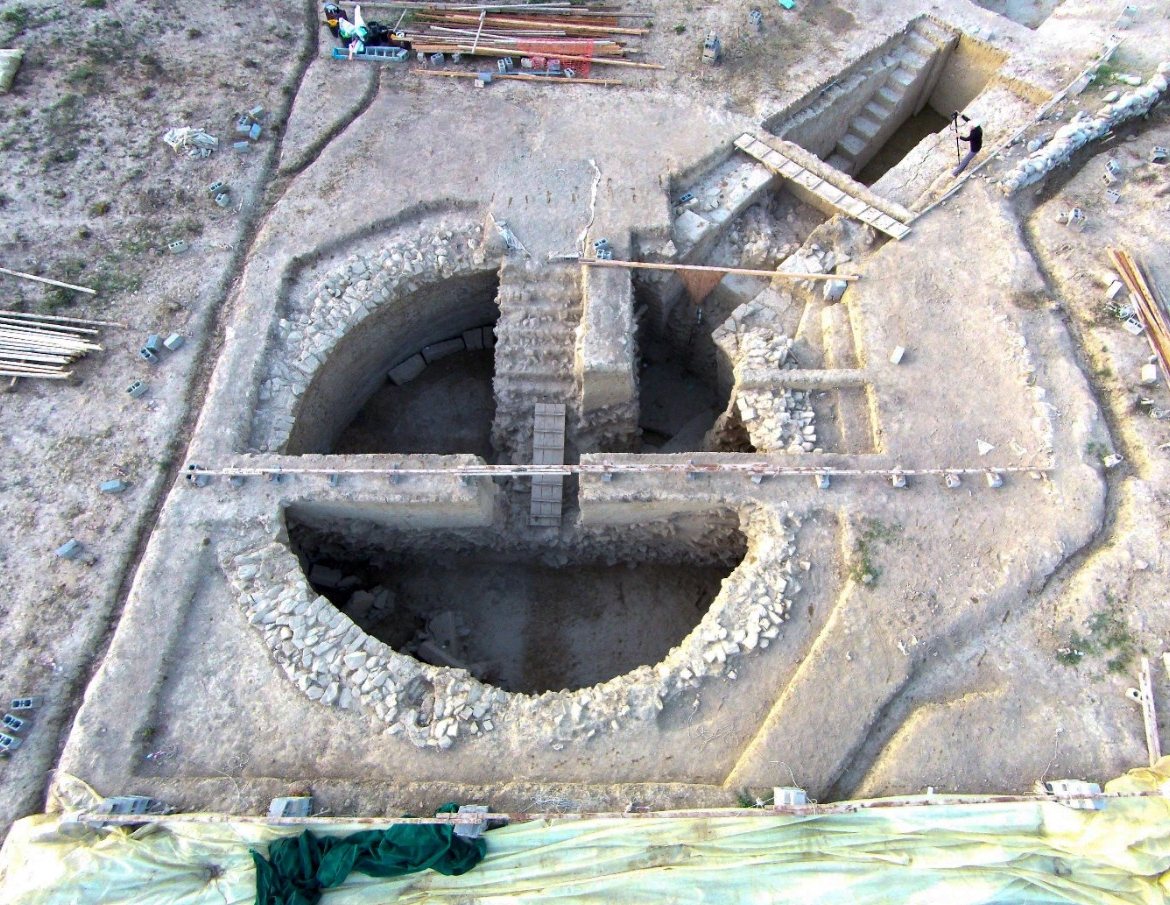
UC archaeologists discovered two Bronze Age family tombs near the grave of the Griffin Warrior, a Greek military leader who was buried with armor, weapons and jewelry. The round tombs, called Tholos VI and VII, at one time were lined with gold foil and contained artifacts that could shed new light on life in ancient Greece. Aerial photo/Denitsa Nenova/UC Classics
The Griffin Warrior is named for the mythological creature — part eagle, part lion — engraved on an ivory plaque in his tomb, which also contained armor, weaponry and gold jewelry. Among the priceless objects of art was an agate sealstone depicting mortal combat with such fine detail that Archaeology magazine hailed it as a “Bronze Age masterpiece.”
Artifacts found in the princely tombs tell similar stories about life along the Mediterranean 3,500 years ago, Davis said. A gold ring depicted two bulls flanked by sheaves of grain, identified as barley by a paleobotanist who consulted on the project.
“It’s an interesting scene of animal husbandry — cattle mixed with grain production. It’s the foundation of agriculture,” Davis said. “As far as we know, it’s the only representation of grain in the art of Crete or Minoan civilization.”
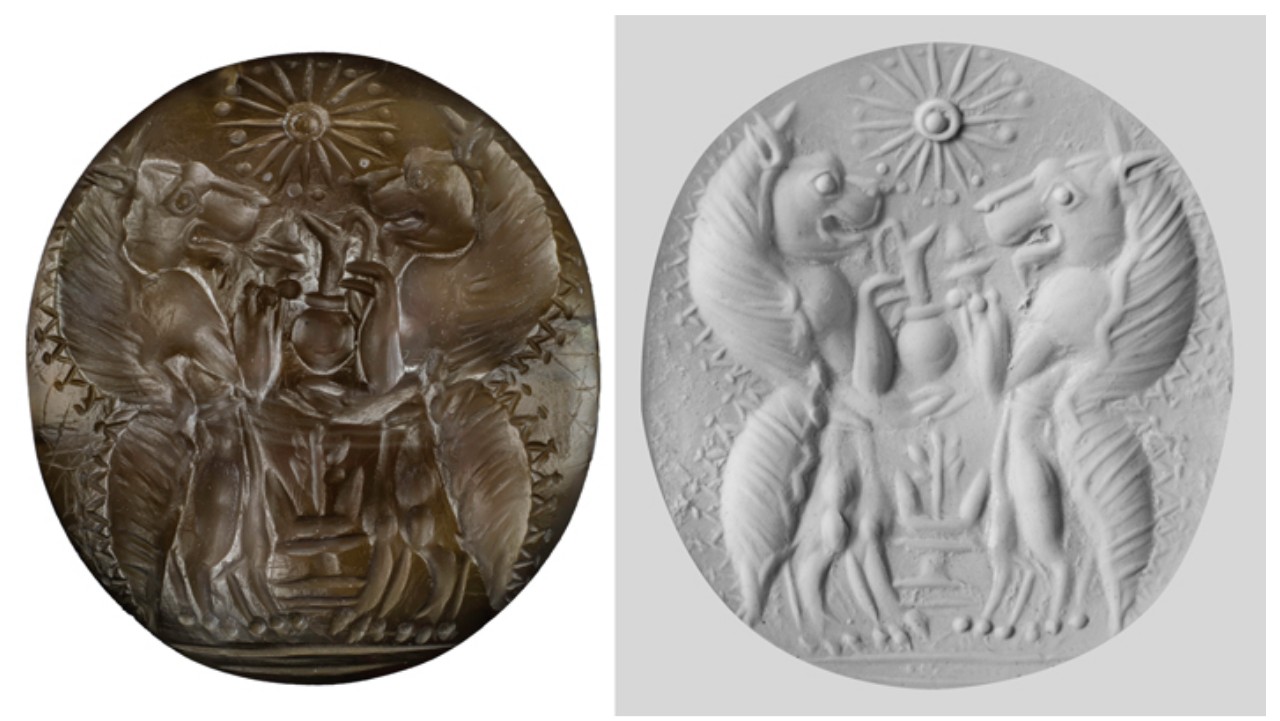
A seal made of the semiprecious stone carnelian from the family tombs at Pylos depicts an image of two genii, lionlike mythological creatures holding serving vessels and an incense burner over an altar and below a 16-pointed star. On the right is a putty impression of the piece. Photo/Jeff Vanderpool/UC Classics
Like the grave of the Griffin Warrior, the two family tombs contained artwork emblazoned with mythological creatures. An agate sealstone featured two lion-like creatures called genii standing upright on clawed feet. They carry a serving vase and an incense burner, a tribute for the altar before them featuring a sprouting sapling between horns of consecration, Stocker said.
Above the genii is a 16-pointed star. The same 16-pointed star also appears on a bronze and gold artifact in the grave, she said.
“It’s rare. There aren’t many 16-pointed stars in Mycenaean iconography. The fact that we have two objects with 16 points in two different media (agate and gold) is noteworthy,” Stocker said.
The genius motif appears elsewhere in the East during this period, she said.
“One problem is we don’t have any writing from the Minoan or Mycenaean time that talks of their religion or explains the importance of their symbols,” Stocker said.
It’s the formative years that will give rise to the Classic Age of Greece.
Sharon Stocker, UC archaeologist
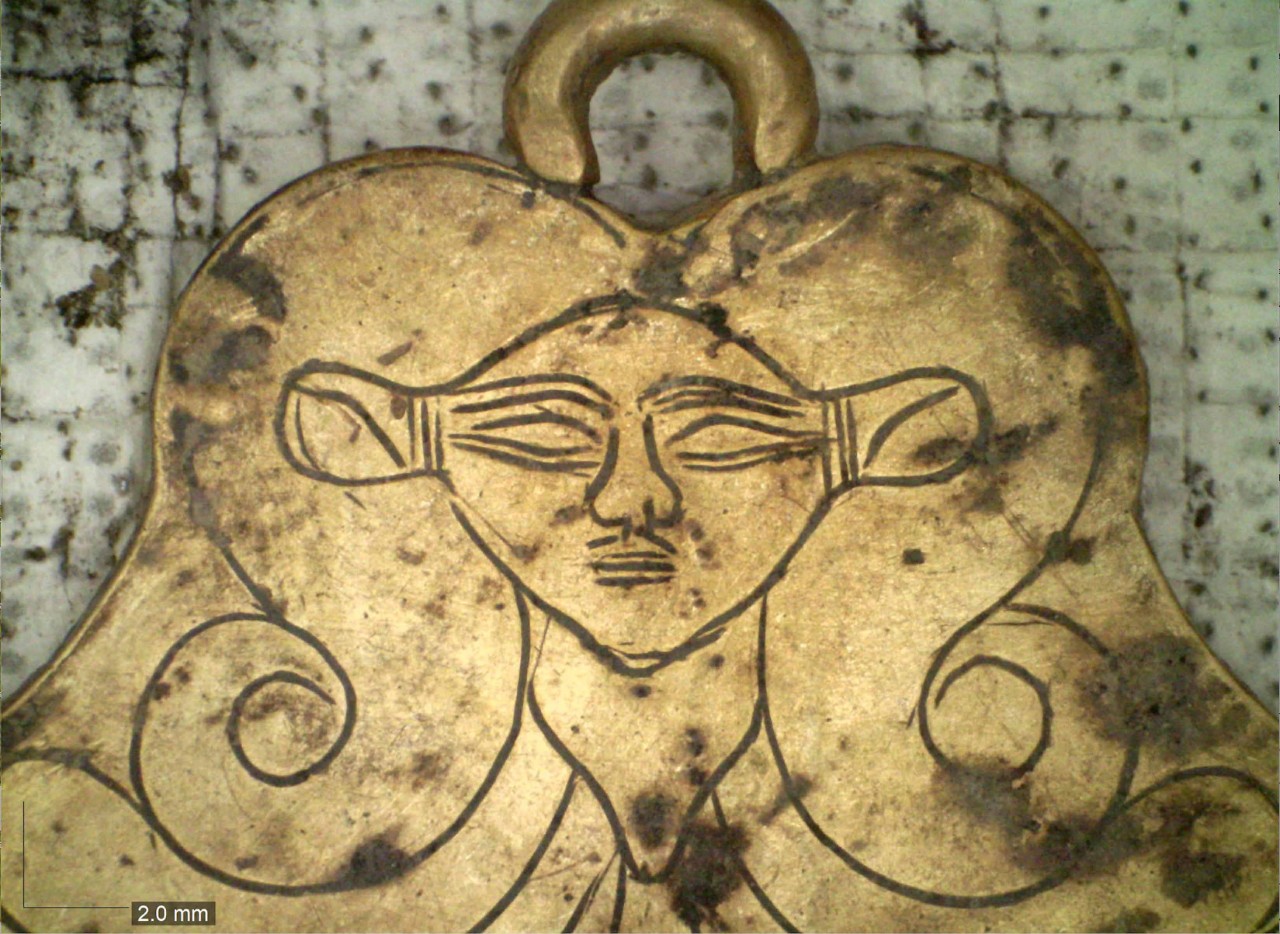
UC archaeologists found a gold pendant in the family tombs at Pylos featuring the likeness of Hathor, an Egyptian goddess who was a protector of the dead. Photo/Vanessa Muro/UC Classics
UC’s team also found a gold pendant featuring the likeness of the Egyptian goddess Hathor.
“Its discovery is particularly interesting in light of the role she played in Egypt as protectress of the dead,” Davis said.
The identity of the Griffin Warrior is a matter for speculation. Stocker said the combination of armor, weapons and jewelry found in his tomb strongly indicate he had military and religious authority, likely as the king known in later Mycenaean times as a wanax.
Likewise, the princely tombs paint a picture of accumulated wealth and status, she said. They contained amber from the Baltic, amethyst from Egypt, imported carnelian and lots of gold. The tombs sit on a scenic vista overlooking the Mediterranean Sea on the spot where the Palace of Nestor would later rise and fall to ruins.
“I think these are probably people who were very sophisticated for their time,” she said. “They have come out of a place in history where there were few luxury items and imported goods. And all of a sudden at the time of the first tholos tombs, luxury items appear in Greece.
“You have this explosion of wealth. People are vying for power,” she said. “It’s the formative years that will give rise to the Classic Age of Greece.”
The antiquities provide evidence that coastal Pylos was once an important destination for commerce and trade.

Stone lines the entrance to a grave called Tholos IV near the former Palace of Nestor, both discovered by the late UC Classics archaeologist Carl Blegen in 1939. Photo/UC Classics
“If you look at a map, Pylos is a remote area now. You have to cross mountains to get here. Until recently, it hasn’t even been on the tourist path,” Stocker said. “But if you’re coming by sea, the location makes more sense. It’s on the way to Italy. What we’re learning is that it’s a much more central and important place on the Bronze Age trade route.”
The princely tombs sit close to the palace of Nestor, a ruler mentioned in Homer’s famous works “The Iliad” and “The Odyssey.” The palace was discovered in 1939 by the late UC Classics professor Carl Blegen. Blegen had wanted to excavate in the 1950s in the field where Davis and Stocker found the new tombs but could not get permission from the property owner to expand his investigation. The tombs would have to wait 63 years for another UC team to make the startling discovery hidden beneath its grape vines.

A map of the site shows the family tombs in relation to the tomb of the Griffin Warrior and the Palace of Nestor. Denitsa Nenova/UC Classics
Excavating the site was particularly arduous. With the excavation season looming, delays in procuring the site forced researchers to postpone plans to study the site first with ground-penetrating radar. Instead, Stocker and Davis relied on their experience and intuition to focus on one disturbed area.
“There were noticeable concentrations of rocks on the surface once we got rid of the vegetation,” she said.
Those turned out to be the exposed covers of deep tombs, one plunging nearly 15 feet. The tombs were protected from the elements and potential thieves by an estimated 40,000 stones the size of watermelons.
The boulders had sat undisturbed for millennia where they had fallen when the domes of the tombs collapsed. And now 3,500 years later, UC’s team had to remove each stone individually.
“It was like going back to the Mycenaean Period. They had placed them by hand in the walls of the tombs and we were taking them out by hand,” Stocker said. “It was a lot of work.”
At every step of the excavation, the researchers used photogrammetry and digital mapping to document the location and orientation of objects in the tomb. This is especially valuable because of the great number of artifacts that were recovered, Davis said.
“We can see all levels as we excavated them and relate them one to the other in three dimensions,” he said.
UC’s team will continue working at Pylos for at least the next two years while they and other researchers around the world unravel mysteries contained in the artifacts.
“It has been 50 years since any substantial tombs of this sort have been found at any Bronze Age palatial site. That makes this extraordinary,” Davis said.
Featured image at top: A gold ring found in the family tombs at Pylos depicts bulls and barley. Archaeologists believe it's the first known depiction of domestic animals and agriculture in a single artwork from ancient Greece. Photo/Jeff Vanderpool/UC Classics
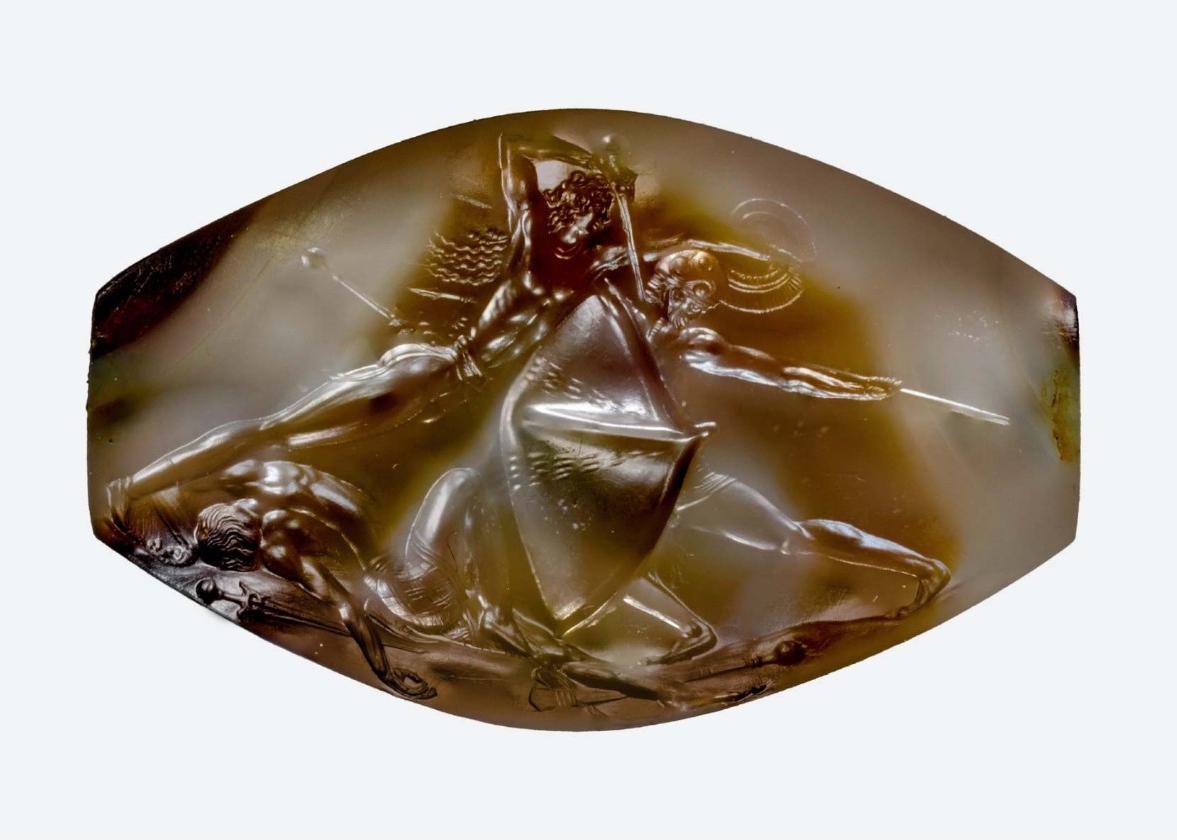
A tiny sealstone from the tomb of the Griffin Warrior depicts mortal combat in exquisite detail. Archaeology Magazine called the sealstone "a Bronze Age masterpiece." UC archaeologists Jack Davis and Sharon Stocker found the tomb of the Griffin Warrior in 2015. More recently, they found two family tombs nearby that also contained a wealth of artifacts dating back more than 3,500 years. Photo/UC Classics
Griffin Warrior in the news
- New York Times: A Grecian Artifact Evokes Tales of 'Iliad' and 'Odyssey'
- Archaeology: World of the Griffin Warrior
- New York Times: Grave of Griffin Warrior at Pylos Could Be Gateway to Civilizations
- Smithsonian: This 3,500-Year-Old Greek Tomb Upended What We Thought We Knew about the Roots of Western Civilization
- Times of London: Griffin Warrior was real lord of the rings
- National Geographic: Rare Unlooted Grave of Wealthy Warrior Uncovered in Greece
- Los Angeles Times: Here's what archaeologists found in a warrior's grave
- CNN Internatinal: 3,500-year-old treasure trove unearthed from grave of Greek warrior-king
- Associated Press: Spectacular 3,500-year-old warrior's grave found in Greece

An aerial view of the site shows the Tholos IV tomb, far left, found by UC archaeologist Carl Blegen in 1939 in relation to the two family tombs called Tholos VI and Tholos VII, uncovered last year by UC archaeologists Jack Davis and Sharon Stocker. Aerial photo/Denitsa Nenova/UC Classics

In one of the two family tombs, UC archaeologists found a carnelian sealstone featuring two mythological creatures called genii with serving vessels and incense over an altar. Photo/Jeff Vanderpool/UC Classics

UC archaeologists found several gold pieces, including this double argonaut. Photo/Jeff Vanderpool/UC Classics

The floor of Tholos VI, one of two family tombs UC archaeologists discovered last year, is composed of giant stone slabs likely taken from the ruins of the Palace of Nestor. Photo/UC Classics

UC archaeologists Jack Davis and Sharon Stocker are continuing the legacy of the late Carl Blegen, pictured above, former head of UC's Classics Department who discovered the Palace of Nestor in 1939 with Greek archaeologist Konstantinos Kourouniotis. Blegen wanted to investigate the olive groves that concealed the Griffin Warrior but could not get permission at the time so the discovery waited 80 years until another UC archaeology team would make the startling find. Photo/UC Classics
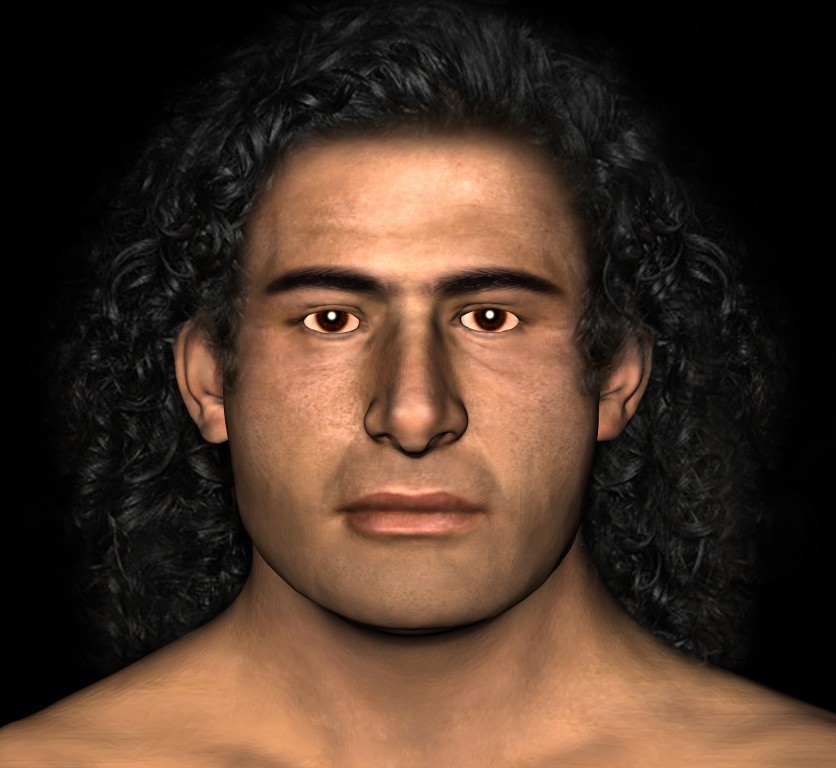
The University of Witwatersrand in South Africa used facial reconstruction to see what the Griffin Warrior probably looked like. Graphic/Tobias Houlton and Lynne Schepartz
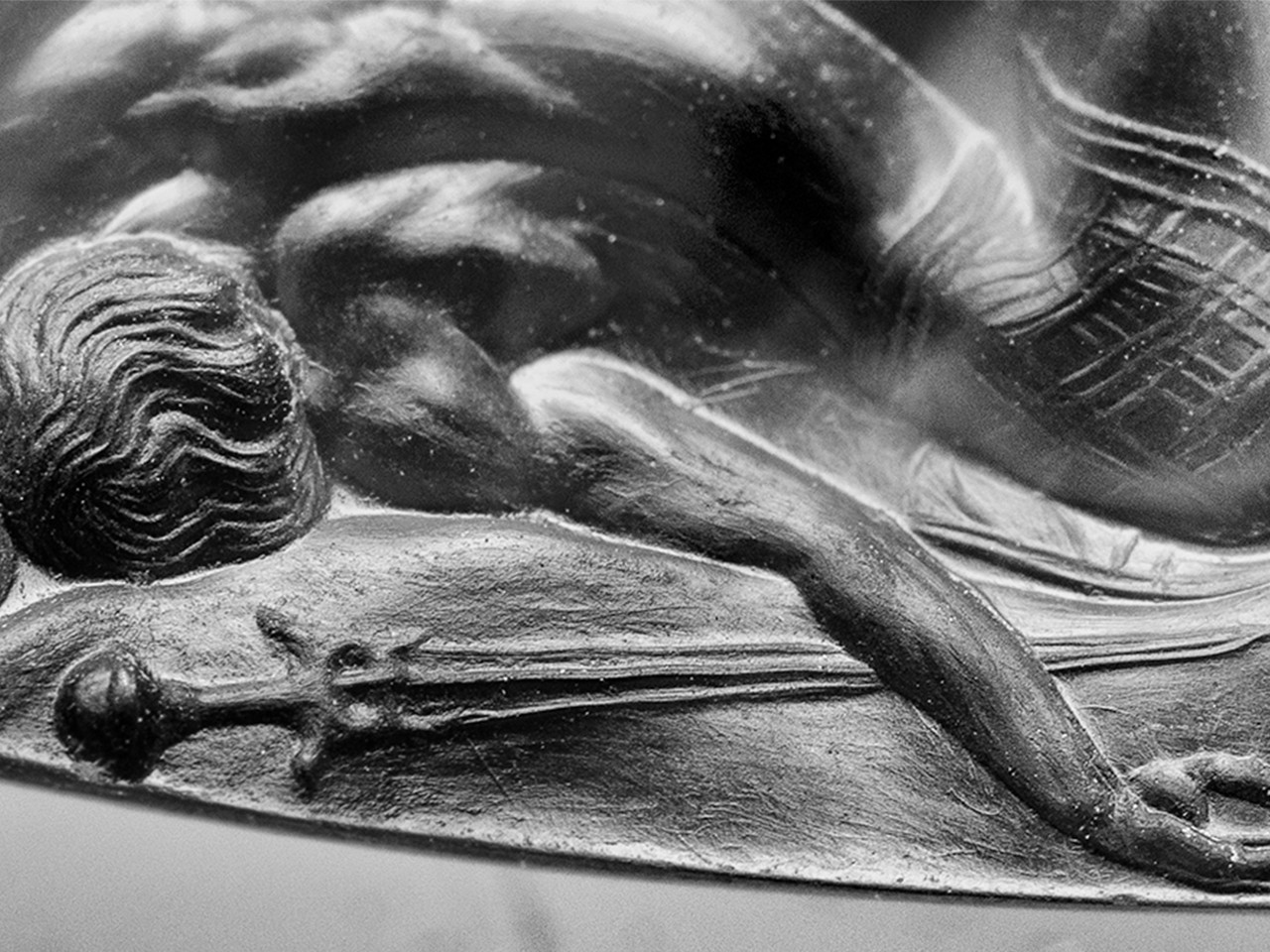
Bronze Age artistry is on display in a sealstone taken from the tomb of the Griffin Warrior. Here a slain soldier lies on the battlefield next to his sword, identical to one found next to the Griffin Warrior.
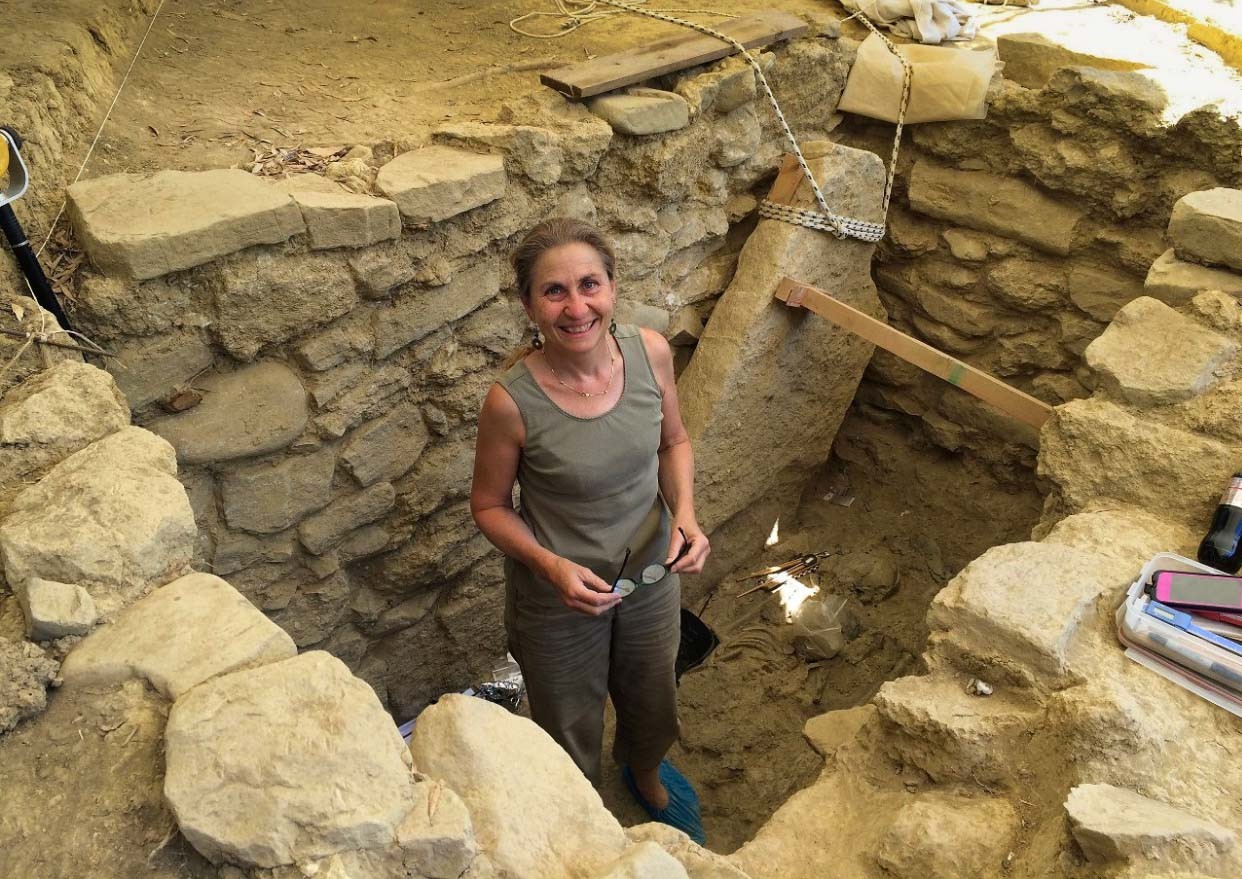
UC senior research associate Sharon Stocker works at the site of the Griffin Warrior in Pylos, Greece, in 2015. Photo/UC Classics
Next Lives Here
The University of Cincinnati is classified as a Research 1 institution by the Carnegie Commission and is ranked in the National Science Foundation's Top-35 public research universities. UC's graduate students and faculty investigate problems and innovate solutions with real-world impact. Next Lives Here.
Become a Bearcat
- Apply online or get more information about undergraduate enrollment by calling 513-556-1100.
- Learn more about UC's many undergraduate and graduate programs.
Related Stories
UC graduate earns Fulbright to teach, bridge cultures in rural...
July 15, 2025
Starting in August, University of Cincinnati graduate Perry Li will serve as a Fulbright English Teaching Assistant in Taiwan. He will work with students while acting as a cultural ambassador for the United States.
Two UC faculty named UNESCO chairs
July 15, 2025
Two University of Cincinnati professors who study environmental science and risk management were appointed to four-year terms as UNESCO university chairs of natural sciences.
What is chemistry?
July 15, 2025
Chemistry is a versatile major that allows students to dip their toes into all professions related to science while completing their undergraduate degree.
